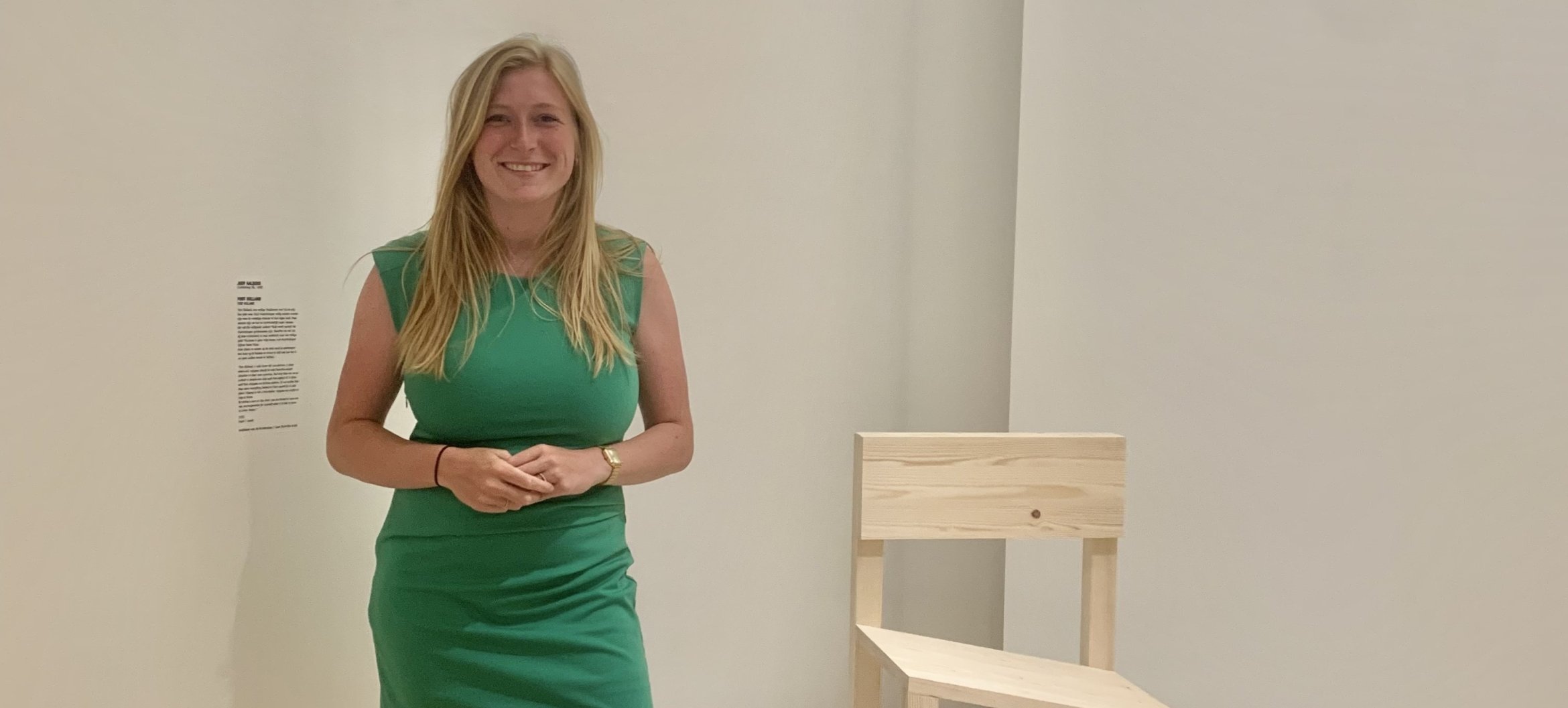Interior design student Judy and her internship at Hollandse Nieuwe: “Just go for it”
- Architecture and...
She considers it bizarre that so many new flats and buildings are constructed every year – “When there are so many standing empty”, says student Judy Aalbers. During the Interior Designer (Associate Degree) course, she has had every opportunity to develop herself creatively. Which will definitely help her in the future when renovating existing buildings. “That's where my heart lies.”

“During my internship at the Hollandse Nieuwe design studio in Amsterdam, we were working on a big office building and my task was to number all the cupboards. That's something you wouldn’t necessarily think about, but on a large-scale project like that it’s very important. How else are you going to find something in an office building with eleven floors where all the cupboards look the same?”
Police exercise facility
Hollandse Nieuwe is a large and established interior and architecture practice. So Judy was quite nervous before she started her internship there as part of her AD. “In the beginning, I thought ‘what do I know?” I didn't dare to experiment, although that is very much what they wanted. Their attitude was – do what you want, we’ll give you feedback.” And that helped. In fact, Judy turned out to be one of the best interns they had had in a long time. “That was so nice to hear. You just have to go for it, don't compare yourself to others – that's another mistake I made – and ask for lots of feedback.” One of her internship assignments was to design an exercise facility for the Amsterdam police force. “That was a great assignment. The only issue was that I had to familiarise myself with multiple drawing programs in a short time. The ones used in the interior world vary quite a lot.”

At Hollandse Nieuwe, Judy really learned how things work in practice. “It's great that an internship is part of this course”, she believes. “After my higher professional Architecture course, I was looking for an opportunity that involved on-the-job training. But it was actually really good to step outside the regular architecture pathway and develop my creative side some more. It was a good choice, because you learn a huge amount in the space of two years.”
Museum for refugees
The two-year Interior Design course train students to conceptually create the atmosphere and experience of indoor spaces. The first year is primarily about learning how to see and learning to design. In the second year, students work on their individual final exam project in an experimental and artistic way through various workshops. “So it becomes more and more specific as you go along”, agrees Judy. “The course also places a strong emphasis on what interests you. So, for example, I used an existing building to create a museum about refugees. It is important to me that I also contribute to society through my work.”
In interior design, you have more scope to experiment. The focus is above all on the spatial experience. That is to say, the total effect of a space, beyond just the configuration and decor."
As a former architecture student, Judy did have the advantage that she had a fairly good command of the technical side. What was new to her was being given the opportunity to think in a freer and more creative way. “Architecture is very much about scale and structure, with lots of fixed rules. In interior design, you have more scope to experiment. The focus is above all on the spatial experience. That is to say, the total effect of a space, beyond just the configuration and decor.” She cites the example of an existing warehouse, a project she is currently working on for her course. “We’re not just looking at the space; we regard the history of the building as being just as important. How to use those stories in the new design? For example, in the middle of the space there is a massive gutter, which means the floor is slanted. Do we get rid of that, or do we turn it into a highlight? Those are fun things to think about."
Costing
Learning to think in concepts was also something that featured heavily during her internship. Whether you think something is beautiful or ugly doesn't count. Judy: “That's an opinion, and everyone has a different opinion. A strong concept is very important in order to be able to justify the particular choices you have made." Apart from that, she liked the fact that she had a lot of interaction with companies. “That way, you also get a better idea of costing. At the Academy, you don't have to think about that, but in the professional field obviously you do.”

My design found its way into a museum – how great is that?”
Judy has nearly finished her course and can't wait to really get stuck in in practice. What will that involve for her? “I definitely want to go into the renovation side, but I'm not yet sure in exactly what role. Do I want to be spending a lot of time on the computer, or doing more with my hands? That's what I'm going to be exploring in the time ahead.” According to Judy, Interior Design provides a useful follow-up course for students who want to continue their development in the area of conceptual spatial design. “For instance, there were students in my class who were going on to a related bachelor’s course in the third year.”
Two years is a good length of time, she feels. “It's just a really fun course, and you get lots of personal attention. Plus there are lots of guest lecturers. For instance, during the classes given by Richard Hutten, I designed a chair that ended up in Museum de Fundatie in Zwolle. My design found its way into a museum – how great is that?”
Follow Judy


